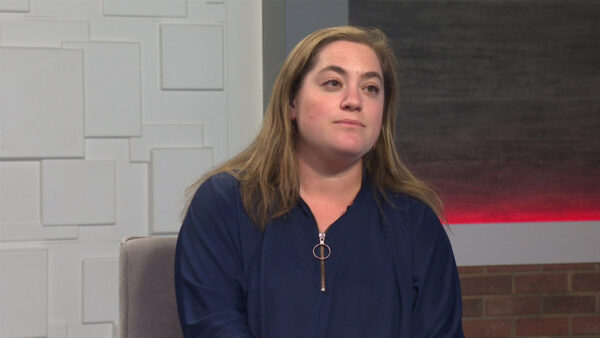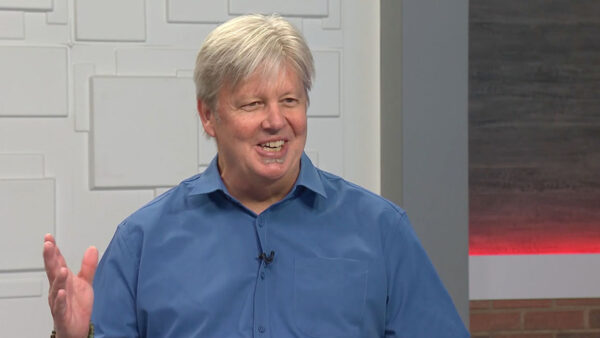A discussion about the pros and cons of a proposed 20-year moratorium on new mining claims near the Grand Canyon with Sandy Bahr of the Sierra Club and Pam Hill of the American Clean Energy Resources Trust.
Ted Simons: A growing interest in uranium mining has prompted the U.S. Department of Interior to consider a 20-year ban on new mining claims on nearly 1 million acres of land around the Grand Canyon. A moratorium has been in place for more than two years as the department studies the environmental impacts of mining near the canyon. With that process nearly complete, a final decision is expected soon. Here to talk about the issue is Sandy Bahr, director of the Grand Canyon chapter of the Sierra Club. And Pam hill, executive director of the American clean energy resources trust, a group that opposes a ban on new mining claims. Thanks for joining us. Sandy, let's start with you. Why should new mining claims near the Grand Canyon be stopped?
Sandy Bahr: Well, one, they're by the Grand Canyon, the Grand Canyon is one of the seven natural wonders in the world, it's an economic engine for northern Arizona, and really, all of Arizona people come from all over the world to visit the Grand Canyon. These lands are part of the watershed for the Grand Canyon area, and we think that it's important to protect the watershed, the wildlife, and to really protect the canyon itself for future generations.
Ted Simons: OK. That same question, different angle. Why shouldn't new mining claims out there be stopped?
Pam Hill: People -- the no mining folks conveniently forget that this area north of the Grand Canyon on the Arizona strip was mined throughout the '80s and into the '90s. I happened to work for a company called energy fuels nuclear who mined those seven mines that we found out there. We are not mining in the Grand Canyon. Nor will anyone ever mine in the Grand Canyon. We mined up there for 12, 13 years, and had a historic track record that was second to none. We met all federal and state standards, and -- not only met them, but exceeded the standard.
Sandy Bahr: Where that past mining has taken place, the U.S. geological survey did research and they found elevated radioactivity at all of those mine sites above background levels, many of the -- about 15 springs and five wells exceeded drinking water standards relative to uranium. So there is an impact despite what the mining industry would send.
Ted Simons: I've heard there's no conclusive evidence that modern mining methods harm the watershed up there. You say that's not true?
Sandy Bahr: You can't prove a negative, and the bottom line is there's a long history of contamination. There is a mine in Grand Canyon that continues to contaminate horn creek. These mines, again, around them there's elevated levels of radio activity, if you go to similar geology where it wasn't mined, it's lower. There are 500 mines that haven't been cleaned up on the Navajo nation. There is a long history of contaminating these lands, and we need to say enough and protect what we have.
Ted Simons: Sounds like your company, have you been good stewards, but not every Steward was so good.
Pam Hill: What sandy I think is referring to, the one mine in the Grand Canyon is the old Orphan Mine, which predated the existence of the national park itself. And it was reclaimed or started to be reclaimed, has been started to be reclaimed by the national park service just a few years ago. And the elevated uranium levels that Sandy is talking about around the Orphan Mine have never been proved to come from the actual Orphan Mine itself. You have to understand too that the Grand Canyon is chock full of naturally occurring, what they call -- what we call brush pipes, the unique geological formations that contain uranium in northern Arizona. So at the Orphan Mine it's our belief that up the creek, the Horn Creek a ways, there is exposed brush pipe that is elevating the uranium in the water.
Sandy Bahr: But again, the research --
Pam Hill: none of the water in the Colorado river has -- been proved to be elevated by uranium mining. It all is below EPA drinking water standards.
Ted Simons: Respond, please.
Sandy Bahr: Well, the research that was just conducted last year by the USGS did show elevated levels, did show above drinking water standards in wells and springs, and this is above areas where you would look at the natural background. And I would say, look, ask the Navajo nation, ask the Hopi people, all the northern Arizona tribes are supportive of protecting these lands from uranium mining, a lot of that has to do with their experience with it, and the concerns -- once these areas are contaminated, there's no way to clean it up. We ask the department of environmental quality when they were permitting some of these mines with general permits, what happens if they're contaminated? Is there a way to clean it up? And the answer is no.
Ted Simons: Is it worth it, with so many millions upon millions of people depending upon this water, you're so close to a national treasure, a world treasure, if you will, at the Grand Canyon, if there is any threat whatsoever, is it worth going ahead with new claims?
Pam Hill: There is absolutely no proof, and for Sandy to compare the legacy mining that went on the Navajo reservation and elsewhere in northern Arizona to Monday mining is a specious argument, it's disingenuous. It's like comparing apples with oranges. The new Monday techniques are so far advanced, and you're talking about a time on the Navarro reservation in the mid 20th century, 1940s, '50s, and '60s when the atomic energy commission controlled uranium mining, and if they -- if the AEC were aware of any health harm that might come from uranium mining, they certainly didn't let anybody know.
Teds Simons: Back to the original question. With modern mining techniques, if we've moved that far ahead, is it still worth it to mine this particular area?
Sandy Bahr: No.
Pam Hill: As I said before, in the Grand Canyon, the nearest mine is 10 miles away from the rim of the Grand Canyon, and six miles from the park boundary.
Sandy Bahr: There are mining claims much closer than that, and I would say, why hasn't the Kanab north mine been cleaned up, for example? And that's one of the areas where there were very elevated levels of dissolved uranium. So I think that the bottom line is, we're supposed to trust them relative to one of our national treasures, relative to a watershed that is important, relative to the Colorado river, which provides drinking water for millions. This is an area that is an economic engine, tourism is the biggest industry up there, it has actually been recession proof -- .
Ted Simons: It's interesting you mention an economic engine. Folks who want to open up new claims, they're saying the moratorium is a job killer, you have an opportunity for a lot of industry, jobs, local jobs, some say not necessarily local, but still, they see this as an economic --
Sandy Bahr: Threatening the Grand Canyon is a job-killer. Because tourism, again, about $687 million annually for northern Arizona, that's a huge amount of money, most of the jobs in northern Arizona are connected to tourism, and again, last year where you were seeing a downturn everywhere, the tourism in northern Arizona was stable. And a lot of it has to do with the Grand Canyon.
Pam Hill: Let's talk about economics and tourism in northern Arizona and southern Utah. You're talking about a region of Arizona and a part of Utah that has 11 to 17% unemployment. Sure, tourism is vital to their economy, but tourism only provides an average wage of $1300 a month, and it's seasonal. They work -- the folks up there work six months out of the year and work with tourism. And they need some kind of stable job source so that their kids don't have to leave and come to Phoenix or Las Vegas or Salt Lake and get jobs.
Sandy Bahr: Stable is not two to three years, and that's why the city of Flagstaff and Coconino county, northern Arizona tribes, hundreds of businesses, conservation interests, hunters, anglers, everyone in Arizona that has really looked at this issue seriously is supporting protection of this area. Because it makes sense for the economy and it makes sense for our future.
Ted Simons: Last question, very quickly, mines apparently according to our other guests, away from people, away from sensitive areas, they're safe, they're modern, those folks need these well-paying, good-paying jobs up there. Bottom line, why is this a bad idea?
Sandy Bahr: It's a bad idea because it is a threat to something that is much more important to our economy and much longer term than jobs that may last two or three years. The Grand Canyon is going to be around for a long time, and we need to protect it.
Ted Simons: Very quickly, why even consider anything that could possibly threaten the Grand Canyon?
Pam Hill: This will not; it has not and will not harm the Grand Canyon. We have a great track record there, and these -- this is a wonderful resource. This is the second largest uranium resource in this country at a time when the president is turning back to more nuclear power.
Ted Simons: We have to stop it right there. Good discussion. Thank you both for joining us.
Sandy Bahr:Sierra Club; Pan Hill:American Clean Energy Resources Trust;























